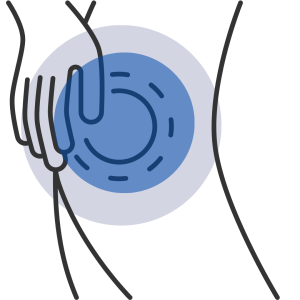
HIP IMPINGEMENT SYNDROME
Hip impingement syndrome is a condition in which the bony structures in the hip joint rub or collide abnormally. This can damage the soft tissues within the hip joint and over time can cause pain, stiffness and restricted movement. Hip impingement syndrome is usually caused by a misalignment of the femoral head and the protrusions on the pelvis.
Causes:
Anatomical Factors:
Deformities of the femoral head can cause impingement syndrome in the hip joint.
Overuse:
Continuous and intensive hip use can lead to damage to bone and soft tissues.
Genetic Factors:
Risk may increase in individuals with a family history of hip impingement syndrome.
Being Active in Sport:
Excessive strain on the hip, especially in certain sports, can trigger impingement syndrome.
Symptoms:
Pain: Pain in the hip area, which may increase, especially with certain movements or activities.
Movement Restriction: Feeling of restriction of hip joint movement, especially in certain positions.
Hardness: Stiffness in the hip area, especially after sitting for a long time or in the morning.
Weakness and Balance Problems: Weakness or instability of the hip muscles can cause problems with walking or balance.
Treatment Methods:
Physical Therapy:
Special exercises with a physiotherapist can strengthen the muscles and support the joint.
Medicines:
Medicines used to combat pain and inflammation can help control symptoms.
Rest and Activity Modification:
Limiting or modifying certain activities can reduce stress on the joint.
Injections:
Steroid injections or hyaluronic acid injections can reduce pain and facilitate joint movement.
Surgical Intervention:
In severe cases, surgical options may be considered to correct bony structures or repair damaged tissues. Hip impingement syndrome is a condition that can affect an individual’s quality of life. It is important to control symptoms with early diagnosis and appropriate treatment.




.png)
.png)
.png)